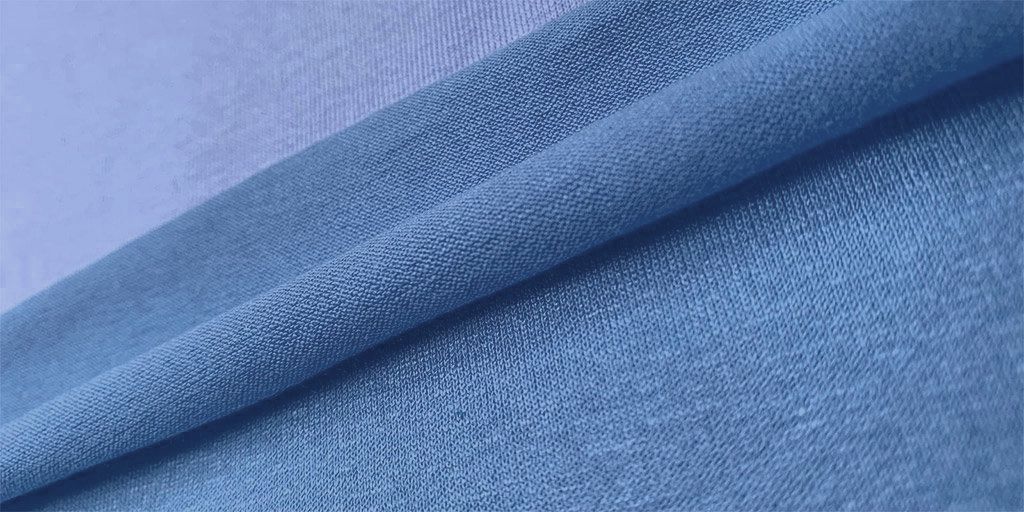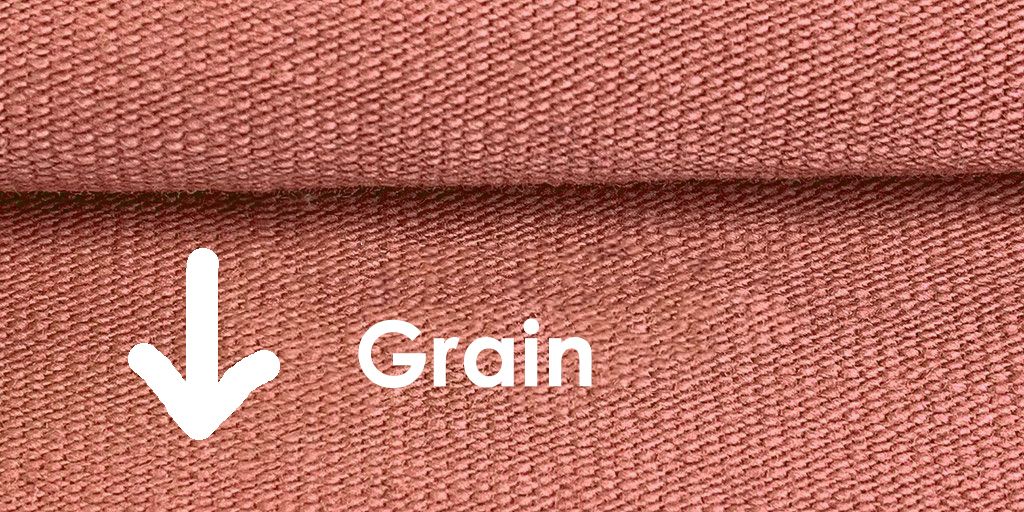
Jersey fabrics are probably the most sewn, but also the most cursed. Especially with thin, elastic material, the machine tends to eat the fabric, seams don’t hold and if things go bad, the stitches are unthread. Anyone who has ever started with these fabrics will have had their own personal experience. Here are some of the useful tips for sewing with jersey fabric.
Tip 1: Choose the Right Jersey
Every sewing project starts with choosing the right material. It’s no different with jersey fabrics. There are now numerous different jerseys made from many different yarns in every well-stocked fabric shop. In this article, we took a closer look at them and wrote down what you can do best with them. Basically, you should look at the fabric and its properties beforehand and consider whether it fits your project. So, you won’t experience any surprises such as too much body emphasis in the wrong place or an unattractive fall.
Tip 2: Wash the Jersey before Sewing
Basically, it pays off to wash fabrics before sewing so that you don’t end up with a garment that no longer fits through shrinking. This is especially true for jerseys. Make sure to follow the washing instructions. A professional tip is to fold the fabric once before washing and then sew the edges all around with a zigzag stitch or the overlock. This will prevent the fabric from warping during washing. Then you can just cut the seam and still have enough material left.
Tip 3: Jersey takes Time to Unfold
Nobody likes to be rushed, especially not an elastic jersey fabric! If you’ve spread out your fabric before cutting, just give it 15 minutes to contract. In this way, you make sure that you will get your pattern pieces in the right size later.

Tip 4: Avoid Curling Up at the Edges
The curling of the edges, especially with thin single jerseys, is the most feared property of these fabrics. First, it must be said that this also has an advantage: often the edges of the fabric do not have to be cleaned at all, as they only roll up and do not fray. But if you want to counteract the curling, then you can iron on a molding tape or a light, bi-elastic interfacing on the edge.

Tip 5: Place Pattern Pieces Correctly
Jerseys are knitted fabrics. It is therefore particularly important that you lay out the pattern pieces according to the grain of the thread. The direction is usually drawn on the pattern pieces. In the knitted jersey fabrics, it runs parallel to the selvages, i.e. the long edges. Especially with thin fabrics, it is better to weigh down the parts with sewing weights instead of pinning them.
Tip 6: Cropping
If you have followed tips 3-5, cutting should not be a problem. You can get the best results with a winder, but you shouldn’t have any problems with scissors either. An important rule is, the thinner the jersey, the more seam allowance you should give. We’ll go into this in more detail in Tip 9, but you shouldn’t sew too close to the edge.
Tip 7: Use Elastic Seams
For an elastic fabric, you need elastic seams. A straight stitch won’t last. A narrow zigzag stitch works well here. You leave the stitch length set normally but reduce the stitch width to 0.5 to 1.5. Some machines also offer an elastic stitch or a three-part zigzag stick. To find out the best one for you, it is always advisable to do trial sewing. If your machine can do overlock stitches, these are also an interesting choice and with a special overlock machine sewing and overcasting jerseys at the same time becomes child’s play.
Tip 8: Be Sure to Use a Jersey Needle
Since knitted fabrics can quickly get holes if needles that are too sharp damage the material, it is advisable to work with a jersey needle. The tip is rounded and thus protects the delicate mesh. So-called “stretch” needles for elastic fabrics are also suitable.
Tip 9: Start Sewing in the Fabric
To prevent your fabric from being eaten directly by the needle plate, you should start sewing as far from the edge as possible. If you then sew a few stitches forwards and then backward, you will prevent the fabric from being pulled into the needle plate.
Tip 10: Twin Needles for Stretchy Hems
To get a nice, stretchy hem, it is advisable to use a twin needle. This way, the hem is beautiful and stays in shape. A twin needle creates two parallel seams with two upper threads and one lower thread.
Tip 11: Always Clean Seams After they have been Sewn Together
Unless otherwise stated in the sewing instructions of your choice, you should always overcast the seams of jersey fabrics after they have been sewn together. Otherwise, the edges can stretch and curl. Then afterward your cut parts will no longer fit together.
Tip 12: Prevent Waves When Sewing
If your fabric ripples when you sew, it is usually because the presser foot is pushing the material together. There are two ways to prevent this from happening here. You can cut off a strip of parchment paper and place it under the left half of your presser foot just next to the seam. This will help the presser foot slide better and prevent the fabric from shifting. Under no circumstances sew the baking paper along with it! The second option is to make changes to the settings of your sewing machine. First, try to decrease the presser foot pressure. An additional top conveyor can also be helpful. Otherwise, you can still experiment with the thread tension.
Tip 13: Reinforce Buttonholes
If you need buttonholes or want to drive in eyelets, for example, you must reinforce the areas. There are many ways to do this. You can work with an ironing pad or with a piece of sturdier fabric. Depending on the desired look, even great variants can be created.
Tip 14: Reinforce Seam Edges With Spray Adhesive
One of our favorite sewing fairies has a very special tip in store for stabilizing particularly unruly edges: temporary adhesive spray. This is a water-soluble adhesive that you can easily spray on (far away from the machine, otherwise you will be messed up). In this way, especially a thin fabric with a tendency to roll up is stabilized and if you wash the garment after sewing, the glue dissolves without residue.
We hope that there was something among the many tips that will make your next sewing project easier for you. Do you have any further tips yourself that we haven’t listed here yet? Then write to us, we would be happy. Have fun sewing!
If you’ve got the desire to work with jersey fabrics, be sure to check out our lovingly compiled assortment of cotton jersey , Viscose jerseys, or jacquards.
Also, if you would like to find out more about jersey, then in this article we explain the differences between the individual types of jersey. This includes a little bit of history, a little bit about manufacturing processes and a lot about different materials.






